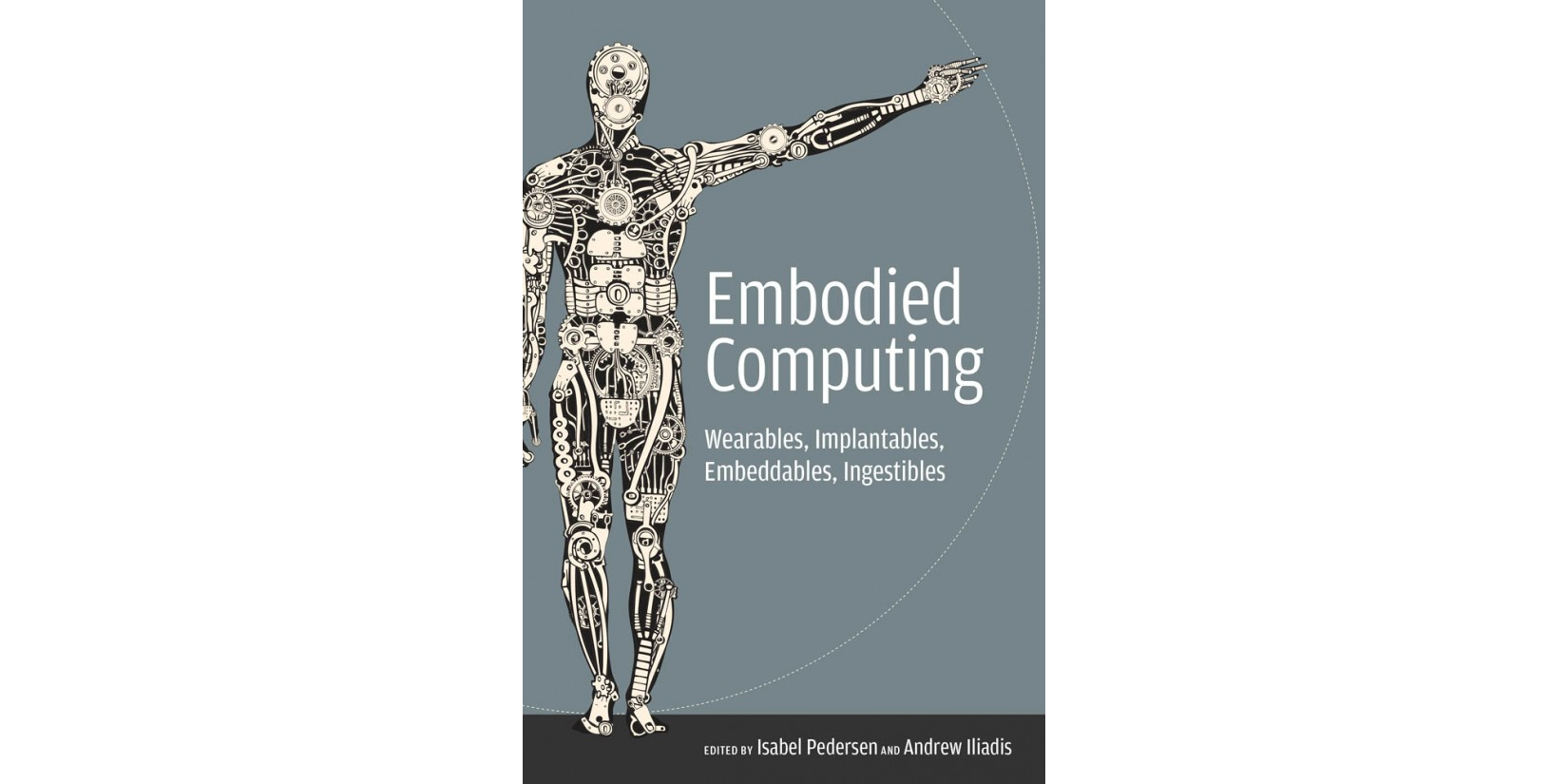Assistant Professor of Media Studies and Production (MSP) Andrew Iliadis has a pretty unique set of research interests; though he has a strong background in critical data studies, he recently co-edited a book titled Embodied Computing: Wearables, Implantables, Embeddables, Ingestibles with Canada Research Chair in Digital Life, Media, and Culture and a Associate Professor at the University of Ontario Institute of Technology Isabel Pedersen, who also served as his former post-doctoral advisor. The book is a compendium of research surrounding the imagined future in which technology can be worn, implanted in the body or ingested, as well as the implications of this technology on humankind. It draws on the knowledge of a number of diverse thinkers, from philosophers and artists to the engineers actually creating these devices. While Iliadis and Pedersen each wrote a chapter on their specific areas of interest, they also co-wrote an introduction to the book.
Iliadis’ interest is mainly in ingestibles, or “smart pills,” while Pedersen’s interest goes all the way back to her dissertation on wearable technology at the turn of the millennium. While wearable tech such as the Fitbit has already hit the mainstream market, ingestibles have a slightly narrower scope of use, particularly in medicine.
“The main reasons that ingestibles are used are for things like slow-release medication,” Iliadis said. “So, like, if you have an elderly relative that doesn’t remember to take their medication, this special pill will slowly release it throughout the week so they don’t have to remember to take the pill. And then there are other ones that take videos inside the body so you don’t have to do invasive surgery.”
Pedersen’s chapter focuses on body area networks. These are networks that can send information between devices that are located on the body the way that WiFi and Bluetooth send information via a network though the air. In order to use technology such as remote patient viewing for doctors, the standard use of networks on the body would be required to facilitate it the way that WiFi is necessary to send an email between computers.
A major resource for the book was the Fabric of Digital Life database, a database that Pedersen and Iliadis have been working on as an ongoing project that houses media artifacts related to embodied computing. It was this database that initially brought Iliadis and Pedersen together as research partners when Iliadis was a postdoctoral fellow at the University of Ontario Institute of Technology, as Pedersen realized that Iliadis’ data skills would be the perfect match for her background in social science.
“In collaborating with Andrew with his strong research background in critical data studies, his research in communication studies and a lot of the work he was interested in doing; we combined our research efforts,” Pedersen said. “So I was sort of this long history on embodiment and embodied technology, and he brought a very current research strength with critical data studies and a lot of other things. No one wants to put Andrew in a small box when it comes to research.”
The Fabric of Digital Life database has been useful in a lot of similar projects as well. For instance, Iliadis has a co-authored paper in the journal New Media & Society with Dr. Tony Liao of the University of Cincinnati titled “A future so close: Mapping 10 years of promises and futures across the augmented reality development cycle”. The paper uses data from Fabric of Digital Life, and overlaps with many of the themes in Embodied Computing.
Graduate and PhD students at Klein College of Media and Communication have also had opportunities to explore these topics through the database as well, making direct contributions as research assistants helping with data entry. Second-year doctoral student Aiden Kosciesza is one of two students doing so, and so far has found some of the most interesting connections between media and science to be in science fiction.
“Science fiction imaginings of ingested tracking devices or mind-controlling nanocomputers prefigure contemporary concerns about the privacy implications of ingestible devices,” Kosciesza said in an email. “However, the articles I've found (so far) from health scientists and researchers who are developing ingestible computing don't reference these concerns.
Christiana Dillard, a second year media studies and production master’s student and newswriter for Klein’s Department of Strategic Communication, said that working with Iliadis allowed her to study technology’s applications in media studies. By compiling articles and government documents related to the subject, she was able to explore the legal, ethical and policy issues involved with ingestible technology.
“Like it or not, embodied technology is the future of technology,” Dillard said in an email. “I believe that this book will be useful not only for graduate students who are interested in media and technology but also for those who are budding healthcare professionals. Even those who are not in academic spaces can learn something new about the state of technology by reading the book.”
Pedersen agrees, especially because the contributors to Embodied Computing each bring something so unique to the table. Their combination allows the reader, professor or student to access these topics and view them in new light, incorporating humanities-style critical thinking into a very technical STEM topic.
“The book definitely exemplifies that interdisciplinarity that we both really think is important for a curriculum,” she said.

